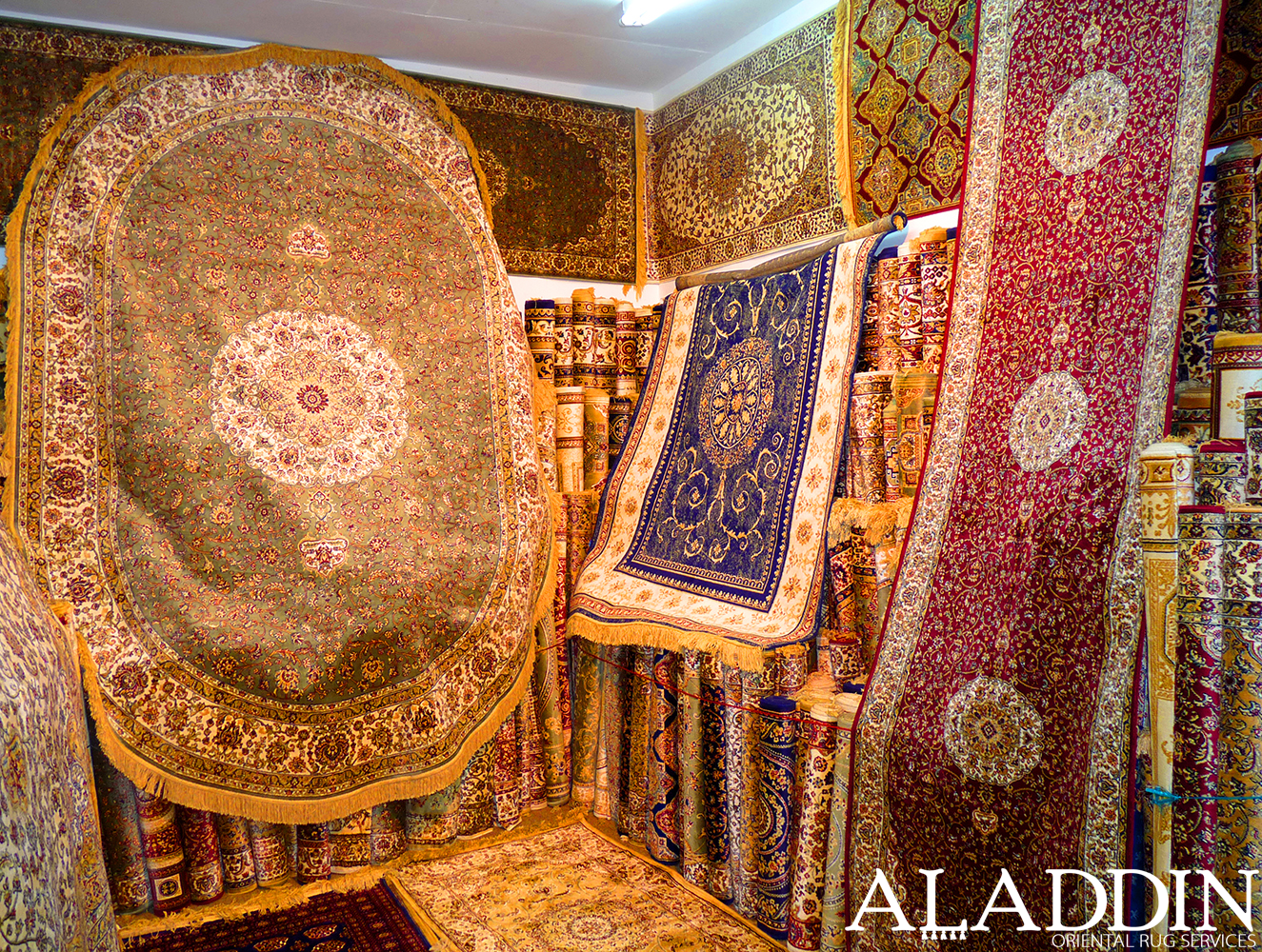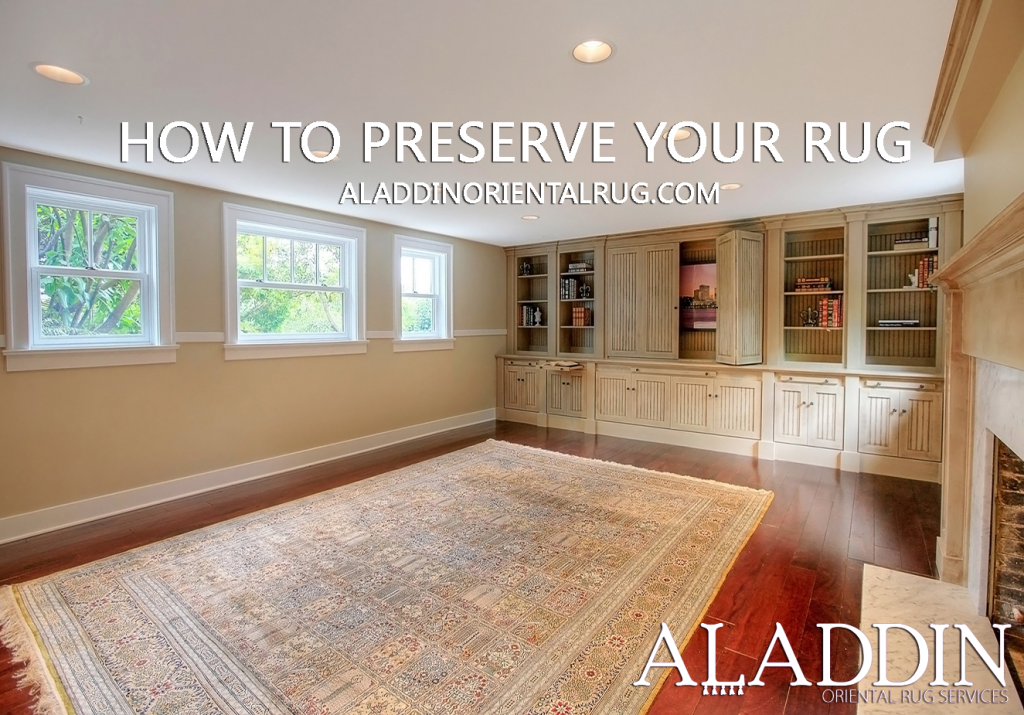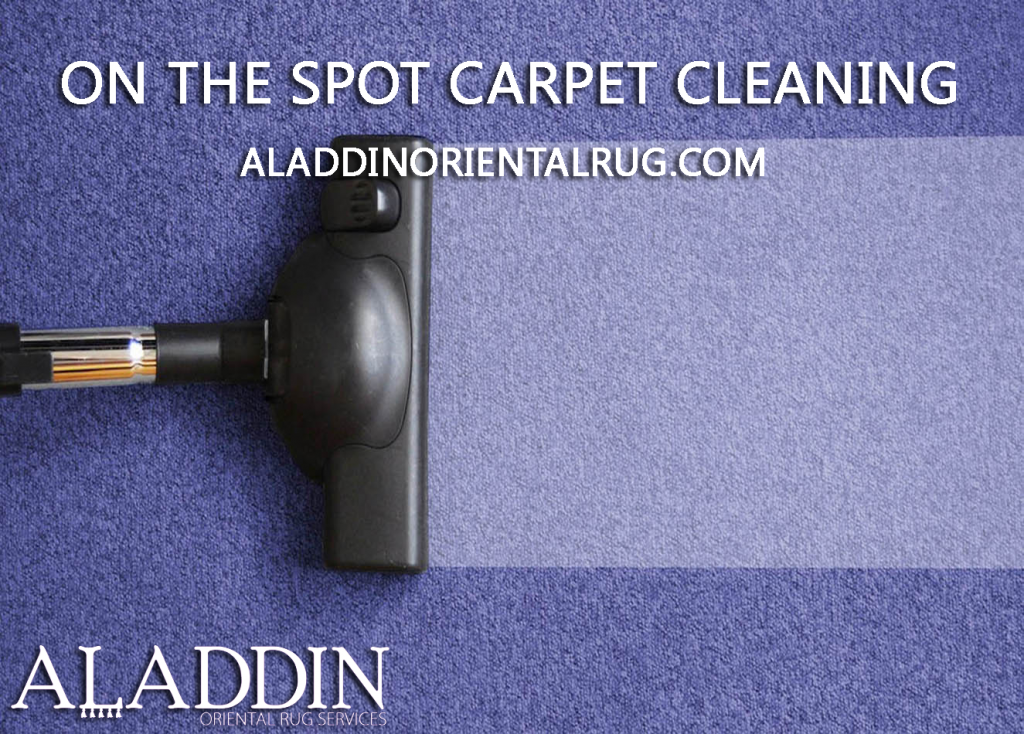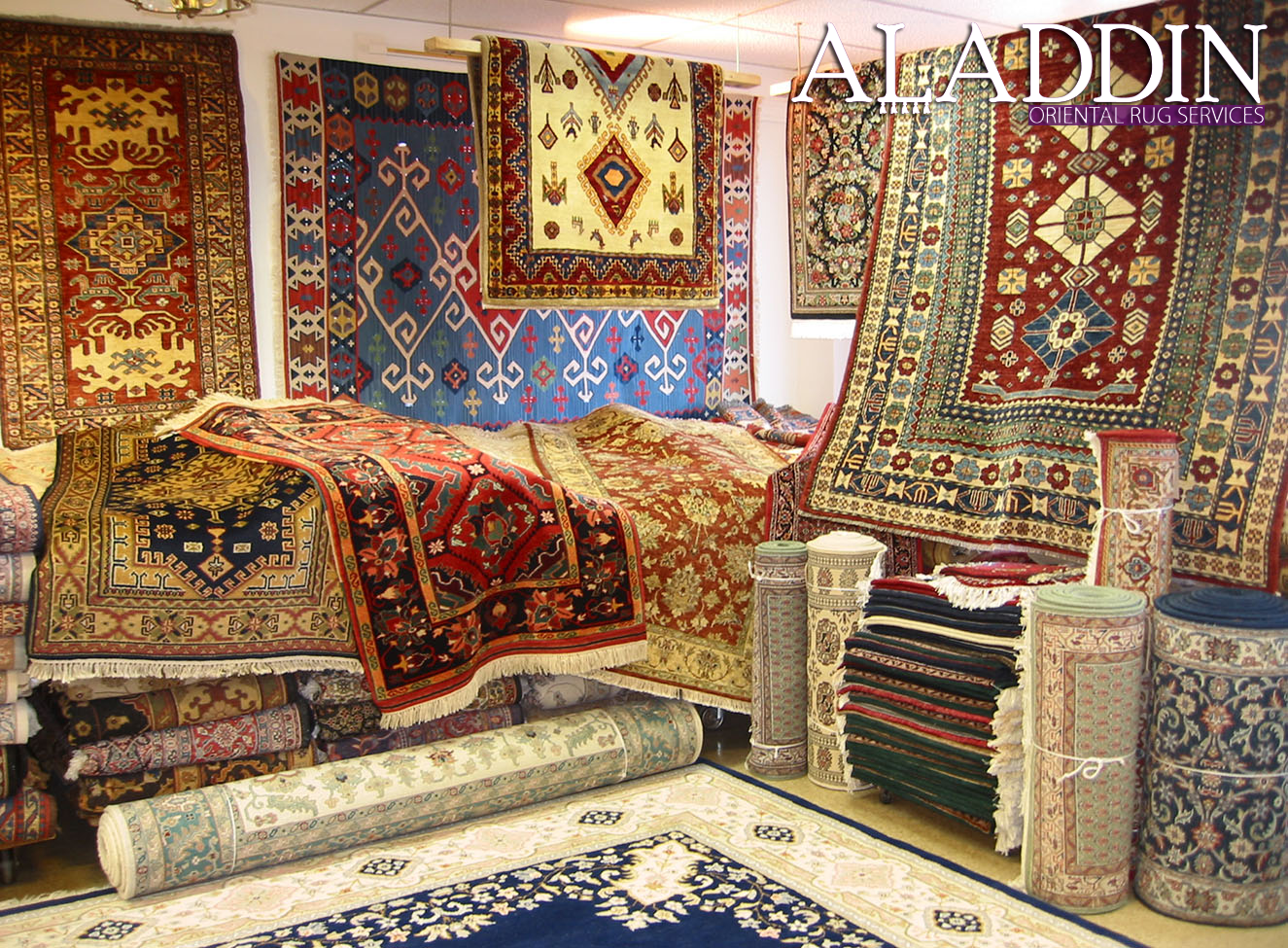
Here’s a great guide for buying rugs, full of tips and valuable information that can help you make your decision about finding the perfect one for your home or business. Are you looking for a traditional design – or a modern one? Today, many traditional rugs blend traditional and modern patterns. Here are a list of questions that you can ask yourself to help get a picture of the kind of rugs that you should purchase.
Do you want your carpet to be more of a muted background for the room?
Match the carpet to the room’s general color – you can choose a single square of color or a subtle pattern. If the room needs a centerpiece, use a center focused medallion design – and if there’s another centerpiece in the room, use an all over design.
Do you want your carpet to be bright in it’s pattern and design?
If the room has a lot of preexisting patterns in it’s furniture or walls, it might be a tasteful choice to choose a solid color rug in a single neutral color. If you want your room to seem cozier, choose a darker color. Bright color rugs make rooms appear larger than they are.
How many people pass through the room?
Do you have children? How about pets? Rugs vary in their durability – if there’s constant traffic, wool flatweave rugs preserve very well. Busy patterns are good for camouflaging footprints and stains.
What’s your desired price range?
Wool is more expensive than cotton, but lasts much longer. Machine made rugs are cheaper than handmade ones.
Once you have an idea about the answer to these questions, it helps to know a few of these words and terms – details about the material and make of carpets.
Types of Material
All kinds of material have different textures and feels. It’s up to you to decide which rug material is best for your room.
Cotton
This material is easily dyed, so it’s available in a huge range of colors. It’s soft, and a more relaxed and affordable than wool. Cotton rugs are usually braided or flat-weaves.
Wool
This is the traditional material choice for rugs. It’s durable, soft on feet, and as time passes takes on a finish that contributes to it’s surrounding environment. These rugs are thicker than those of other materials. Wool from sheep raised in high altitudes have the strongest fiber. These rugs are best when they get professionally cleaned.
Seagrass, Sisal, and Jute
These materials are durable and perfect for floor coverings. Sisal is the strongest. while Jute is the softest. None of them are as soft as cotton or wool – but they boast special textures that other materials can’t quite match. If you’re allergic to wool, these rugs are an excellent choice – however they should be protected from both the sun and damp environments. These rugs are not easily cleaned.
Polypropylene
This synthetic fabric is stain-resistant, making it a good choice for outdoor rugs.
Silk and Viscose
This material is usually blended with wool in combination rugs – the addition of this material often contributes to the design by adding a light quality.
Types of Weaving Patterns
Hand Knotted
This pattern is complicated, and takes artisans much labor and maneuver. The pile is made by knotting yarn around pairs of warps all along the rug’s length. Both the asymmetric/open Persian knot and the symmetric Turkish knot patterns can be used. The more individual knots, the more long-lasting the rug will be.
Tufted
This pattern can be completed by people or machinery – it involves loops being pulled through a attached backing material and trimmed to make a smooth surface. Then another layer is connected to the back of the rug to hold all the loops in place.
Hooked
Similarly to in tufted rugs, yarn is here attached to a backing under an additional cloth layer – however the pile is not cut to create a smooth appearance.
Flatweave
This rug doesn’t have any knots or any pile – these rugs are created on looms and put through warps.







